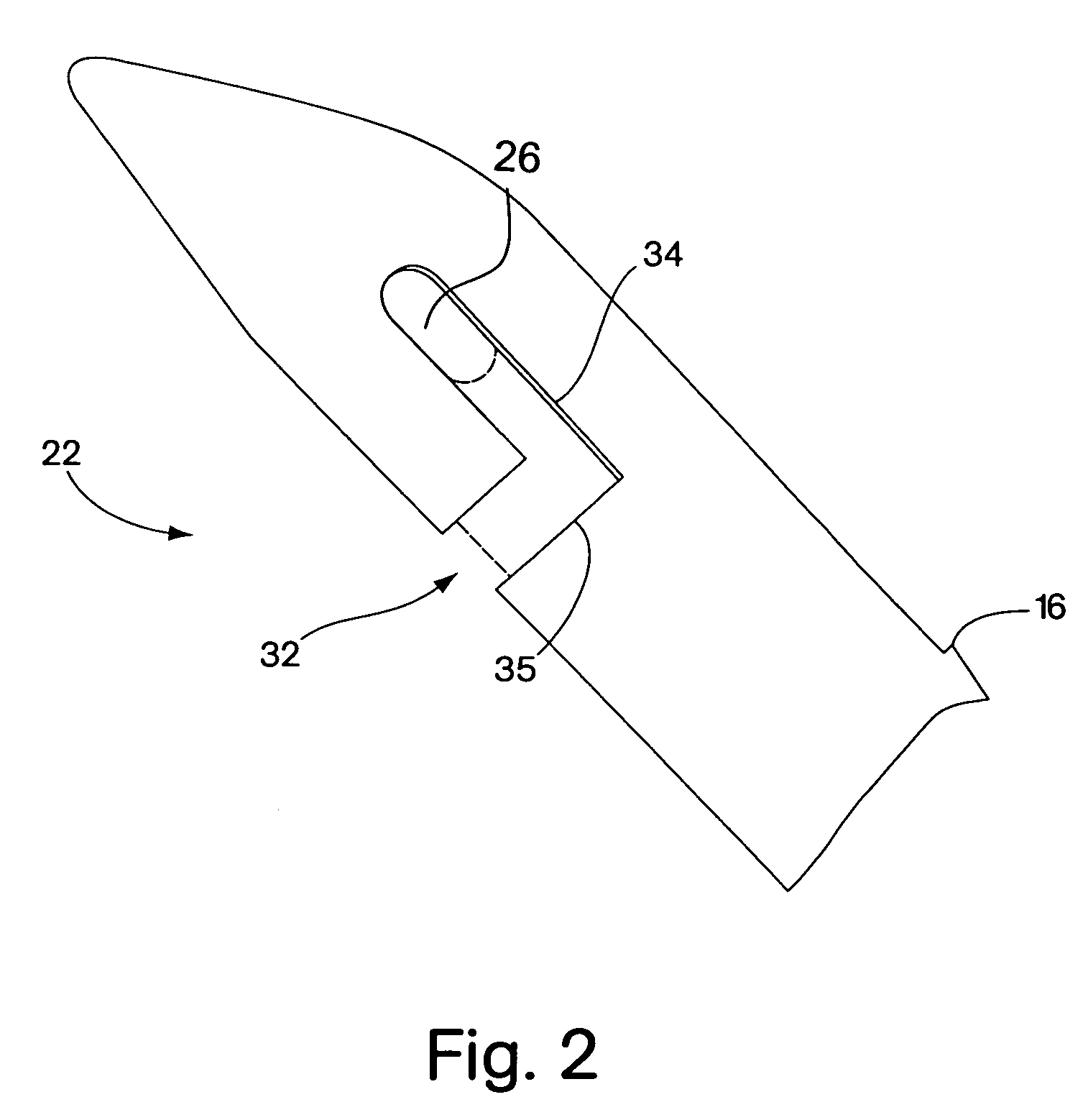Methods and devices for the treatment of urinary incontinence
a technology for urinary incontinence and treatment methods, applied in the field of urinary incontinence treatment methods and devices, can solve the problems of urinary incontinence, risk of bone marrow infection and/or pubic osteitis, needles or carriers may wound large blood vessels in the operating region, etc., to facilitate transvaginal access of the pelvis, reduce the risk of accidental puncture, and blunt tissue dissection
- Summary
- Abstract
- Description
- Claims
- Application Information
AI Technical Summary
Benefits of technology
Problems solved by technology
Method used
Image
Examples
Embodiment Construction
[0028]In overview, FIGS. 1 and 2 illustrate a surgical instrument 10 constructed according to the present invention for delivery of sutures or slings for the surgical treatment of female urinary incontinence. The curved surgical instrument 10 is constructed to transvaginally deliver sutures and / or slings to appropriate locations within the body to treat incontinence, without a need for dissection with sharp instruments.
[0029]The surgical instrument 10 is adaptable to be used in conjunction with a variety of tips and a variety of suture and / or sling deployment devices, providing the surgeon the flexibility to choose between different fixation methods.
[0030]A hook-type suture deployment device 50 is illustrated in FIGS. 3 and 4. The hook-type suture deployment device 50 provides for suture or sling attachment onto an anatomical support structure.
[0031]Referring to FIG. 1, a curved surgical instrument 10 according to the present invention comprises a handle 14 and a shaft 16 extending ...
PUM
 Login to View More
Login to View More Abstract
Description
Claims
Application Information
 Login to View More
Login to View More - R&D
- Intellectual Property
- Life Sciences
- Materials
- Tech Scout
- Unparalleled Data Quality
- Higher Quality Content
- 60% Fewer Hallucinations
Browse by: Latest US Patents, China's latest patents, Technical Efficacy Thesaurus, Application Domain, Technology Topic, Popular Technical Reports.
© 2025 PatSnap. All rights reserved.Legal|Privacy policy|Modern Slavery Act Transparency Statement|Sitemap|About US| Contact US: help@patsnap.com



